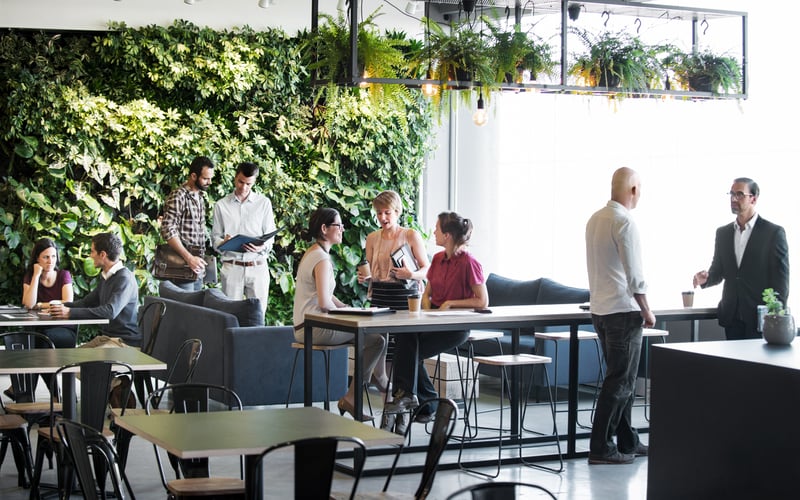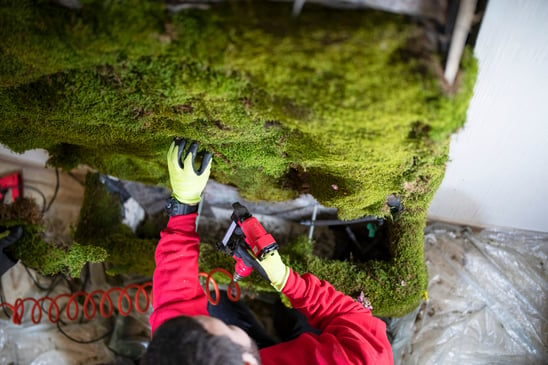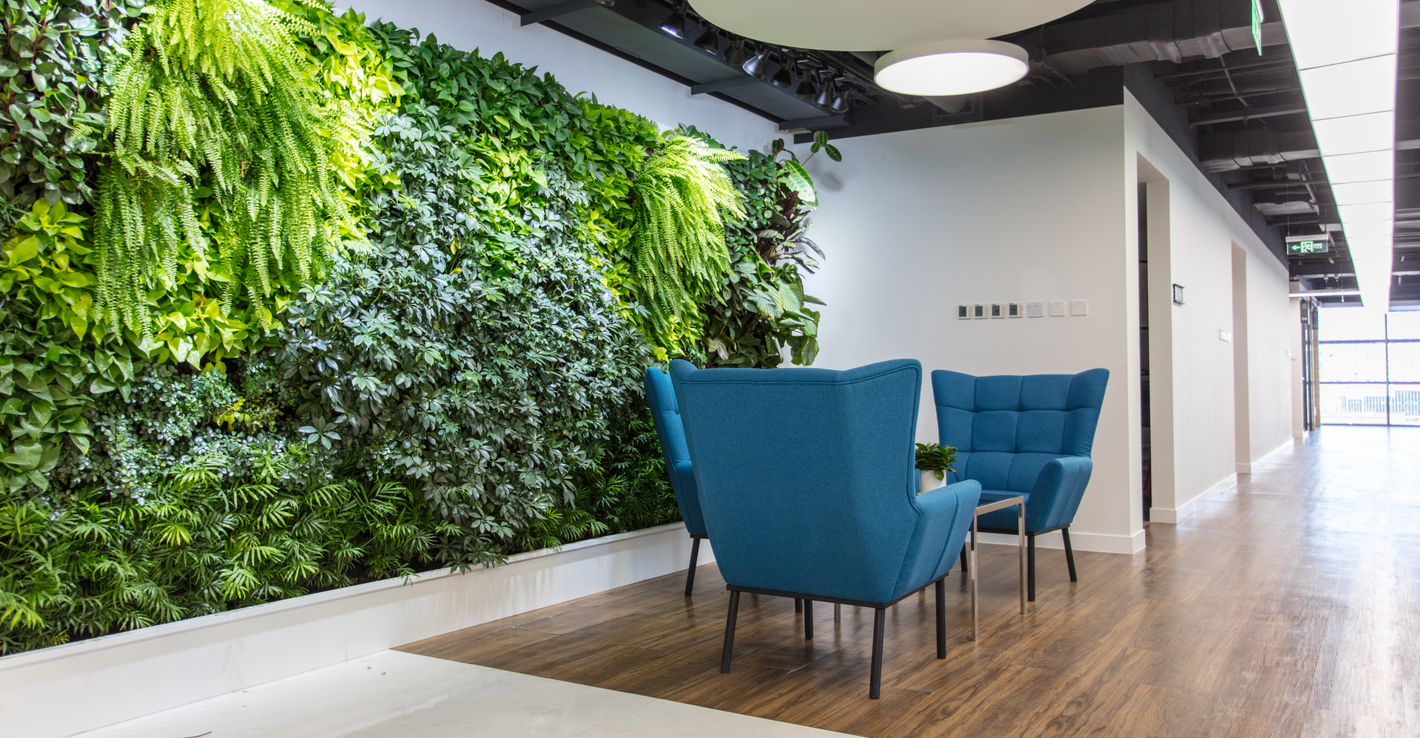People are increasingly less exposed to natural elements in our daily lives, especially in urban environments. The rapid urbanisation of recent decades without a sustainable perspective has relegated green spaces to the background and has caused a series of environmental problems, such as the deterioration or depletion of natural resources. Sustainable building seeks to reverse this situation by finding a balance between nature and building.
In this article, we will explore one of the ways of incorporating nature into construction: indoor vertical gardens or green walls. We will analyse its benefits beyond its aesthetic value, the elements that compose it, and its relationship with WELL certification, which focuses on ensuring the health and occupant comfort of buildings.Benefits of indoor vertical gardens
The presence of indoor vertical gardens has become increasingly common not only in commercial spaces or offices, but also in restaurants, homes and hospitals. Although it is most common to find walls covered with artificial plants, these do not offer the same benefits as natural vertical gardens.
In fact, studies developing the concept of biophilia indicate that humans have an innate connection with nature. Therefore, being in contact with natural elements has a positive impact on people's health, both physical and mental.

The benefits of indoor vertical gardens go beyond aesthetics and decoration, as they offer direct advantages for the health of the occupants of these spaces. Some of them are:
- Improved indoor air quality: the plants that make up the vertical gardens oxygenate and filter the air.
- Increased relative humidity: Indoor vertical gardens act as natural humidity regulators in enclosed spaces, helping to maintain a healthier humidity level.
- Sound insulation: they help to absorb and reduce ambient noise, creating a calmer and quieter environment.
- Improved well-being and stress reduction: the presence of vegetation indoors has been shown to have a positive effect on reducing stress, anxiety and fatigue, all of which are related to biophilia.
Key elements and design
As with the implementation of green roofs, a proper and optimised design is essential for the implementation of indoor vertical gardens. Foremost, the selection of plants is a crucial aspect for the successful implementation of a vertical garden. Some of the plants most commonly used for this type of garden include ferns, philodendrons, pothos, and bromeliads.

In addition, indoor vertical gardens require adequate irrigation and drainage systems to maintain plant health and prevent moisture problems in the structures.
Supports and structures are another essential component of indoor vertical gardens. They can be prefabricated panels, modular systems, or customized structures, making it important to select durable and moisture-resistant materials that allow for proper anchoring and solid support for the plants.
Lighting is also a crucial aspect for vertical gardens, especially in environments with little natural light. Artificial lights can be used to complement natural lighting and ensure the necessary amount of light for plant growth.
Finally, it is important to consider the maintenance and care of indoor vertical gardens. This translates into tasks such as pruning, fertilization, and pest control, as well as cleaning structures and surfaces to maintain the plants in optimal condition.
When designing indoor vertical gardens, it is essential to consider both aesthetics and functionality. The arrangement of plants, the combination of colours and textures, and the harmonious integration with the interior environment are key elements to achieve an attractive and balanced design.
Indoor vertical gardens in WELL certification
The WELL certification is an international standard that assesses criteria aimed at ensuring the comfort, well-being and health of building occupants. Indoor vertical gardens fall directly under the 'Mind' category of the WELL certification, specifically under the credit 'Nature and Place (M02)'. This credit focuses on the integration of nature into the building to improve the mental health of the occupants.
The first part of this credit is focused on providing connection with nature, and the following points must be fulfilled:
- The building must provide the occupant with exposure to natural elements (patterns, materials, colours, sounds...)
- The building must also contain plants, water elements, or views of nature.
As is evident, indoor vertical gardens are perfect examples of elements that meet this WELL certification credit by providing direct connections to nature through the presence of plants.
In conclusion, indoor vertical gardens are not only an aesthetic element but also offer benefits for the comfort, well-being, and health of people. These small natural spaces in urban environments improve indoor air quality and promote an emotional connection with nature. Additionally, its integration into architectural projects can contribute to obtaining WELL certification, an internationally recognized standard.


